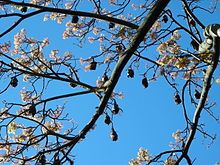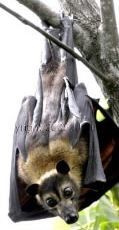In June of 1770, Captain James
Cook and his crew were exploring the Australian coastline, and the Great Barrier Reef about 110 Kms (65 mi) to the
north of where Cairns is today. They turned
seawards into what they thought was deeper water to avoid a large point of land.
Bam! They ran aground on the Endeavour Reef, having just discovered it by
punching a hole in the bottom of their boat. They named it Endeavour Reef after
their unfortunate ship - It really ruined their day! They managed to stay
afloat and headed for shore to beach the Endeavour for repairs. It took a
while, but they fixed the hole, then sailed on. They named the cape that caused
the whole incident Cape Tribulation.
 |
| Cape Tribulation |
Cape Tribulation is at the
northern end of the Daintree Rainforest. The dark green of the rainforest runs
straight into the blue of the Coral Sea. The Daintree Rainforest stretches from
Mossman Gorge to Cape Tribulation. Check it out on the map. It is a place of steep mountains, deep
gorges, high rainfall, flood prone rivers, and incredible plant and animal
bio-diversity. Walking along the nature trails is like being in a huge, leafy,
green cathedral. Moist air, everything drippy and wet, tall trees, jungle vines
trailing, and a carpet of dead leaves and twigs.
 |
| Daintree Rainforest |
The plant species in the Daintree
are very ancient. They include types of ferns and trees that date back before
the dinosaurs, up to 135 million years ago. The Daintree is home to 30% of the
reptile, frog and marsupial species in Australia, 18% of the birds (over 400
species), 65% of the bats and butterflies and over 12,000 types of insects. And
all of this bio-diversity is crammed into an area under 1% of Australia. Now
this is the place to go bird, bat and nature watching!
When Captain Cook ran aground in
1770, you can be sure the local Kuku Yulanji Aboriginal tribe who had been
living in the Daintree River area for over 9,000 years knew about it. They
would also have seen the white man rush for gold in the 1870's as the Daintree
Village was founded to supply the miners. One of their descendants, Juan
Williams, runs Walkabout Cultural Adventures out of Daintree - his tours are worth checking out for an
authentic experience. Another Aboriginal Cultural Daintree Rainforest Tour leaves Cairns and Port Douglas also.
As an alternative, to really
discover the Daintree on your own, rent a car, then stay a few nights in the Daintree Village area and get to meet some of the locals.
Cheers,
Matt







































